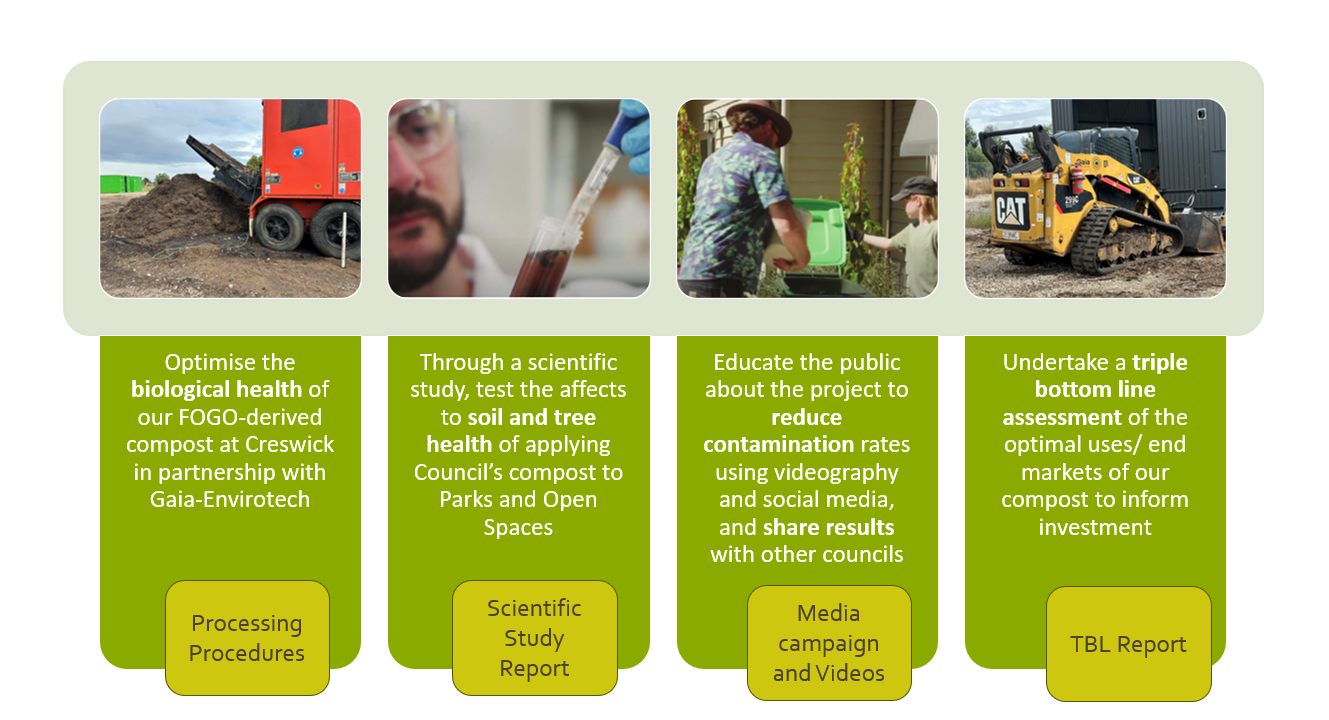Our Circular Organics Project is supported by the Circular Economy Organics Council Fund delivered by Sustainability Victoria under the Victorian Government’s circular economy policy, Recycling Victoria: a new economy.
The project is focusing on a scientifically rigorous study of soil and tree health after applying compost, made from the organics collected via the food and garden organics bins, to a range of Council-managed parks and open spaces.
This project consists of four components, progressing in parallel:
- Optimisation of the biological health of our organics-derived compost in partnership with Gaia EnviroTech.
- Trialling the application of compost derived through Council’s kerbside food and garden organics collection to various sites within our parks and open spaces (using scientifically rigorous methods).
- Education campaign about the project (and importance of keeping compost free from contamination) using videography and social media and sharing results with other councils.
- Undertaking a triple bottom line assessment of the optimal uses/end markets of our compost.

At the end of the project, we are hoping to have enough data and evidence to continue to use the compost in Council's parks and open spaces, make it available to residents and potentially to other high value uses in the Shire.
Sustainability Victoria has more information on Why councils should use recycled organic compost.